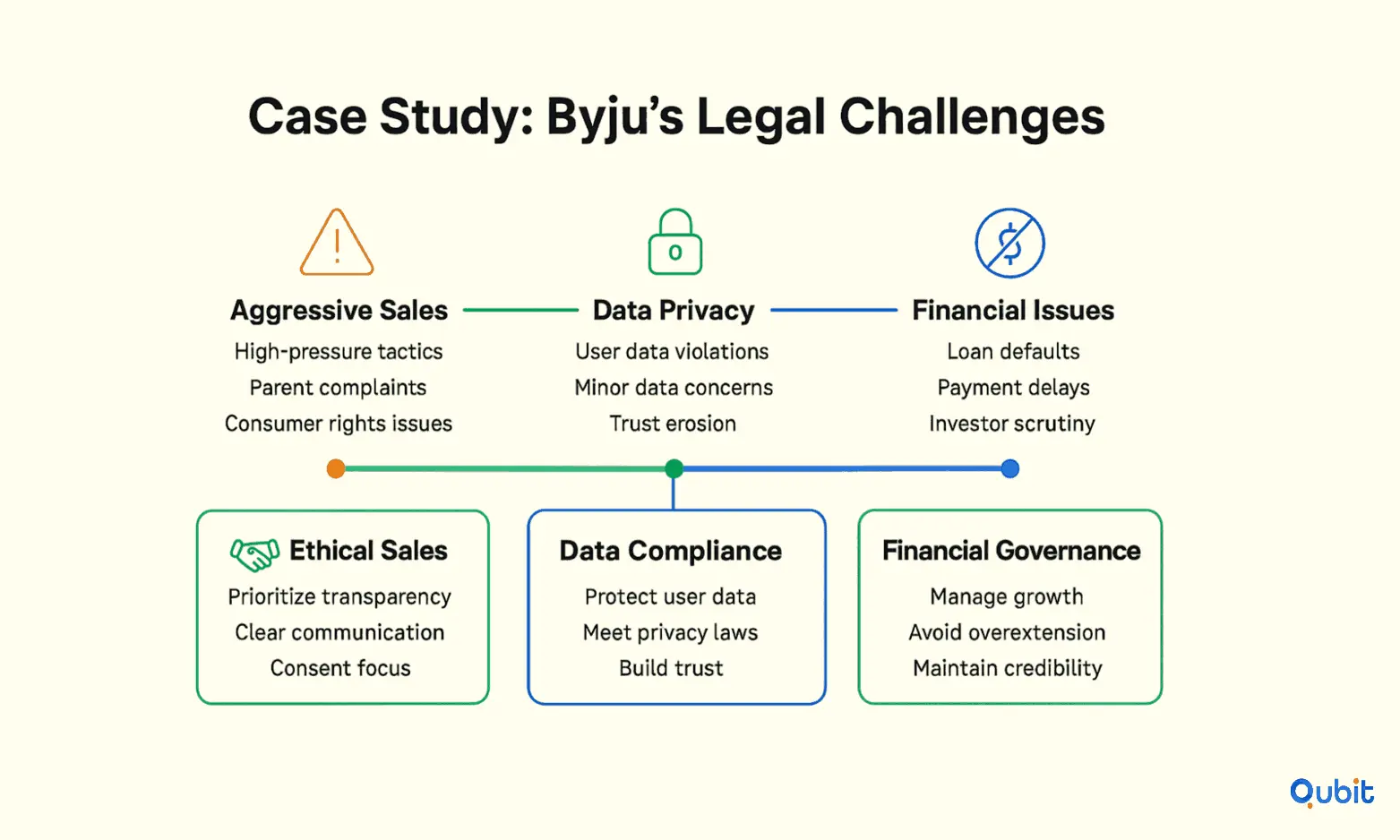The intersection of education and technology offers immense opportunities, but raising funds in this sector comes with its own set of challenges. Legal and regulatory frameworks play a critical role in shaping the fundraising journey for EdTech startups. From data privacy laws to compliance with investor regulations, understanding these factors is essential for success.
A broad examination of EdTech fundraising dynamics is enriched by the foundational perspective provided in how to raise funds for edtech startups, which informs your understanding of associated regulatory challenges.
This article delves into the key legal and regulatory considerations that EdTech founders must address when seeking funding. Let’s jump right in to explore these critical aspects and how they impact your fundraising strategy.
Regulatory and Compliance Landscape
EdTech startups face a complex web of regulations that govern their operations, particularly in areas like data protection and local legal mandates. Adhering to these rules is not just about avoiding penalties; it’s about building trust with users and stakeholders. For instance, the General Data Protection Regulation (GDPR) sets stringent requirements for handling personal data, impacting businesses globally. To understand these obligations in detail, refer to the UK Government page outlining data protection requirements.
The Importance of Data Protection Compliance
Data protection laws, such as GDPR and related UK legislation, demand transparency and lawful data processing. This is especially critical for EdTech companies, which often handle sensitive information like student records. Businesses that collect user’s personal data must ensure compliance with principles like data minimization and purpose limitation. For a deeper dive into these principles, see this guide on lawful processing guidelines.
Staying Ahead of Local Legal Mandates
Beyond overarching regulations like GDPR, startups must also navigate local laws that vary by region. These can include rules on intellectual property, accessibility standards, and educational content licensing. Keeping legal documents up-to-date is essential to avoid fines and lawsuits. Regular audits and consultations with legal experts can help ensure compliance across jurisdictions.
By prioritizing regulatory adherence, EdTech startups not only mitigate risks but also position themselves as reliable and ethical players in the industry.
Intellectual Property and Brand Protection
Safeguarding intellectual property (IP) is a cornerstone of building a resilient and valuable business. Whether it’s patents, trademarks, copyrights, or trade secrets, protecting these assets ensures that your innovations and brand identity remain uniquely yours. Without proper protection, businesses risk imitation, loss of competitive advantage, and diminished valuation.
Types of Intellectual Property Protection
Understanding the various forms of IP protection is essential for crafting a comprehensive strategy. Patents secure inventions, trademarks protect brand identity, and copyrights safeguard creative works. Each type plays a distinct role in shielding your business from unauthorized use and ensuring your intellectual contributions are recognized and monetized.
The Role of Trade Secrets
Trade secrets, such as proprietary formulas, processes, or strategies, are another critical aspect of IP. Unlike patents or trademarks, trade secrets rely on confidentiality rather than registration. To maintain their value, businesses must implement robust measures to prevent disclosure.
Preventing Misuse and Enhancing Valuation
Unauthorized use of intellectual property can lead to significant financial and reputational damage. Beyond protection, a strong IP portfolio enhances company valuation, making it an attractive asset for investors and partners.
By prioritizing intellectual property and brand protection, businesses not only secure their innovations but also lay the foundation for long-term growth and success.
Negotiation Strategies with Customers, Partners, and Suppliers
Effective negotiation is the cornerstone of building lasting business relationships. Whether you're dealing with customers, partners, or suppliers, understanding their unique value propositions and drafting clear, enforceable agreements can transform transactional exchanges into collaborative partnerships.
1. Prioritize Value Over Price
Negotiations often focus on cost, but emphasizing value creates stronger outcomes. For example, when working with suppliers, consider factors like reliability, scalability, and quality alongside pricing. This approach ensures both parties benefit from the agreement, fostering trust and long-term collaboration.
2. Build Relationships Before Negotiating
Establishing rapport with stakeholders before entering formal negotiations can significantly improve outcomes. A foundation of mutual respect and understanding allows for smoother discussions and reduces the likelihood of conflict.
3. Draft Contracts That Protect All Parties
Clear and enforceable contracts are essential for safeguarding interests. These documents should outline expectations, deliverables, and contingencies to prevent misunderstandings.
4. Understand the Other Party’s Goals
Successful negotiations hinge on understanding the priorities of the other party. Whether you're discussing terms with a supplier or a strategic partner, aligning your offer with their objectives creates win-win scenarios.
5. Use Data to Strengthen Your Position
Data-driven insights can enhance your negotiation strategy. For instance, analyzing market trends or supplier performance metrics can provide leverage during discussions. This approach demonstrates preparedness and builds credibility.
6. Explore Funding Contexts for Negotiation
Negotiations often intersect with funding decisions, particularly in industries like EdTech. An analysis of financing options is complemented by insights into legal frameworks, as exemplified by best edtech investors 2025, allowing you to contextualize funding sources within regulatory guidelines.
By applying these strategies, businesses can foster stronger relationships, minimize risks, and achieve mutually beneficial outcomes in negotiations.
Talent Management in EdTech
Attracting and retaining top talent in the EdTech industry requires a thoughtful approach that balances competitive compensation, clear hiring criteria, and adherence to labor laws. The rapid growth of this sector has created a demand for professionals with specialized skills, making it essential for companies to stand out as desirable employers.
1. Offer Competitive Compensation
To attract the best candidates, EdTech companies must ensure their compensation packages align with industry standards. Platforms like PayScale, Glassdoor, and Salary.com are invaluable for researching salary benchmarks and crafting offers that appeal to top-tier talent. For instance, check Glassdoor to gauge standard compensation packages in the EdTech space, ensuring your offers remain competitive and fair. Beyond salaries, consider including performance bonuses, equity options, and comprehensive benefits to make your company more appealing.
2. Define Clear Hiring Criteria
A well-defined hiring process is critical for identifying the right candidates. Utilize platforms such as LinkedIn, Indeed, and AngelList to post job openings and source professionals with EdTech expertise. These platforms allow you to reach a large pool of qualified applicants while targeting individuals with the specific skills your organization needs. Additionally, tools like HireVue, Codility, and HackerRank can help evaluate candidates’ technical, communication, and soft skills through structured online assessments. For example, use Codility to automate coding challenges for developer roles, ensuring an efficient and objective evaluation process.
3. Prioritize Employee Engagement
Retaining talent goes beyond compensation—it requires fostering a positive work environment. Tools like Culture Amp, Lattice, and 15Five enable companies to measure and improve employee engagement through feedback surveys and structured reviews. Regular check-ins, such as those facilitated by 15Five, can help keep remote teams aligned and motivated. Additionally, recognizing employee achievements through platforms like Bonusly, Kudos, and Achievers can significantly boost morale. For instance, integrate Bonusly to celebrate milestones and maintain high motivation levels across your team.
4. Ensure Compliance with Labor Laws
Compliance with labor laws is non-negotiable for sustainable talent management. Staying updated on regulations related to contracts, working hours, and employee rights protects your organization from legal risks while fostering trust among employees. Partnering with legal advisors or using compliance management software can simplify this process, ensuring your practices align with local and international standards.
5. Embrace Remote Work Flexibility
The EdTech industry often operates across borders, making remote work a common feature. Tools like Slack, Zoom, and Google Workspace facilitate seamless collaboration for distributed teams. For instance, use Slack for instant communication across different time zones, ensuring your workforce remains connected and productive. Offering flexible work arrangements not only attracts talent but also supports employee retention by accommodating diverse needs.
Tax Optimization and Penalty Avoidance
Effective tax management is a cornerstone of financial stability for businesses. By implementing strategic business structures and maintaining precise financial records, companies can significantly reduce their tax liabilities while steering clear of costly penalties.
Strategies for Minimizing Tax Liability
Identify Tax Deductions and Credits
Maximizing deductions and credits is one of the most effective ways to lower your tax burden. From operational expenses to industry-specific incentives, understanding what qualifies can make a substantial difference. Check Details on strategies to minimize tax liability to identify potential tax deductions and credits that align with your business activities.Choose the Right Business Structure
The structure of your business, whether it's a sole proprietorship, partnership, LLC, or corporation—can directly impact your tax obligations. Selecting the most tax-efficient structure tailored to your operations can lead to significant savings.Plan for Tax-Efficient Investments
Investing in assets or programs that offer tax benefits, such as renewable energy initiatives or research and development credits, can further optimize your tax strategy.
Avoiding Penalties Through Compliance
Maintain Accurate Financial Records
Keeping detailed and organized financial records ensures compliance with tax regulations and reduces the risk of errors that could lead to penalties.Understand Regulatory Deadlines
Missing filing deadlines or payment schedules can result in fines and interest charges. Familiarize yourself with all relevant timelines to avoid unnecessary costs.Seek Professional Guidance
Tax laws are complex and ever-changing. Consulting with a tax professional can help you stay updated on regulations and ensure your business remains compliant.
By adopting these strategies, businesses can not only optimize their tax obligations but also safeguard themselves against potential penalties.
Building a Sustainable and Scalable EdTech Business
The EdTech industry is experiencing unprecedented growth, with the global market size projected to expand from USD 250.16 billion in 2024 to an estimated USD 721.15 billion by 2033. This rapid expansion underscores the need for businesses in this space to adopt sustainable and scalable models. Achieving this requires a combination of long-term planning, innovative financing, and strategic partnerships.
1. Prioritize Long-Term Planning
Sustainability begins with a clear vision for the future. EdTech businesses must focus on creating value that endures beyond immediate market trends. For example, embedding adaptability into your business model allows you to respond effectively to evolving educational needs and technological advancements.
2. Explore Innovative Financing Models
Securing funding is a critical step, but the approach to financing can significantly impact scalability. Collaborative models, such as those discussed in blended finance edtech partnerships, offer a pathway to sustainable growth. These partnerships combine public and private funding, enabling businesses to scale responsibly while addressing broader educational challenges. By diversifying funding sources, EdTech companies can reduce financial risks and maintain operational stability.
3. Build Strategic Partnerships
Collaboration is key to scaling effectively. Strategic partnerships with educational institutions, governments, and technology providers can amplify impact while sharing the burden of growth. Insights from details on sustainable and scalable business strategy highlight the importance of aligning with partners who share your vision. These alliances not only expand your reach but also enhance your ability to deliver innovative solutions.
Educational Standards and Accreditation
Securing the appropriate licenses, certifications, and accreditations is a cornerstone of operating legally and maintaining credibility in the educational sector. These standards ensure that institutions meet the required benchmarks for quality and compliance, safeguarding both the organization and its learners.
Why Accreditation Matters
Accreditation serves as a formal recognition of an institution's adherence to established educational standards. It validates the quality of services provided and builds trust among stakeholders, including students, parents, and regulatory bodies. Without proper accreditation, institutions risk legal penalties and diminished reputation.
Steps to Achieve Compliance
Understand Local Requirements
Each country or region has specific accreditation norms. For example, the UK Startup Manual is an essential resource for confirming local educational accreditation requirements. Institutions can cross-check authorization norms in the UK Startup Manual for compliance clarity to ensure they meet all legal obligations.Secure Necessary Licenses
Licensing is often the first step in legal operation. This process typically involves registering with relevant educational authorities and demonstrating adherence to curriculum standards, faculty qualifications, and operational guidelines.Maintain Certifications
Certifications often focus on specialized areas, such as safety protocols, technology integration, or curriculum design. Regular updates and renewals are crucial to staying compliant with evolving standards.Periodic Audits and Reviews
Accreditation bodies often require institutions to undergo periodic reviews to ensure ongoing compliance. These audits assess everything from curriculum quality to administrative practices, ensuring that standards are consistently met.
Corporate Governance and Legal Structuring
Establishing a robust corporate governance framework is essential for fostering trust and ensuring operational integrity. Proper legal structuring, combined with well-drafted governing documents, plays a pivotal role in achieving this. These elements not only define the operational boundaries of a business but also set the tone for transparency and accountability.
The Role of Legal Structuring
Legal structuring serves as the foundation for a company’s operations. It determines how the business is organized, whether as a corporation, partnership, or limited liability company. Each structure comes with its own set of legal and financial implications, making it critical to choose the one that aligns with the company’s goals. A well-thought-out structure can protect stakeholders, streamline decision-making, and ensure compliance with regulatory requirements.
Governing Documents: The Blueprint for Accountability
Governing documents, such as bylaws, operating agreements, and shareholder agreements, are more than just formalities. They outline the rights, responsibilities, and expectations of all parties involved. Clear and comprehensive documentation minimizes disputes, ensures consistency in decision-making, and provides a roadmap for resolving conflicts.
For instance, bylaws can specify how board meetings are conducted, while shareholder agreements can address issues like equity distribution and voting rights. These documents act as a safeguard, ensuring that all stakeholders are aligned and that the company operates within its defined parameters.
Building Investor Confidence
Transparency and accountability are not just internal values; they are also critical for attracting and retaining investors. Investors are more likely to trust a company that demonstrates a commitment to ethical practices and clear governance. Proper legal structuring and governing documents signal to investors that the company is prepared to handle challenges responsibly and is focused on long-term growth.
By prioritizing these aspects, businesses can create a solid foundation that not only supports their operations but also enhances their reputation in the eyes of stakeholders.
Case Study: Legal Challenges Faced by Byju’s

Byju’s, a prominent name in the edtech industry, has faced a series of legal challenges that have cast a shadow over its rapid growth. While the company initially gained recognition for its innovative learning solutions and significant funding milestones, its aggressive expansion strategies have led to scrutiny. For instance, Byju’s Funding Success highlights how the company attracted large-scale investments to become a decacorn, but this rapid growth also exposed it to operational and legal vulnerabilities.
Aggressive Sales Practices and Consumer Complaints
One of the most significant issues Byju’s has encountered involves its sales tactics. Reports of high-pressure sales techniques, where parents were persuaded to purchase expensive subscriptions, have raised ethical and legal concerns. These practices have not only damaged the company’s reputation but also led to formal complaints from consumer rights organizations. Such incidents underscore the importance of balancing growth ambitions with ethical business practices.
Privacy Violations and Data Security
Another critical area of concern has been data privacy. Byju’s has faced allegations of mishandling user data, particularly that of minors. These claims have sparked debates about the adequacy of its data protection measures and compliance with privacy laws. For an edtech platform, ensuring the security of sensitive information is not just a legal obligation but also a trust-building measure.
Financial Irregularities and Loan Defaults
Financial mismanagement has further complicated Byju’s legal landscape. Reports of loan defaults and delayed payments to creditors have raised questions about the company’s financial governance. These issues highlight the risks associated with rapid scaling without robust financial oversight.
Conclusion
Securing funding for your EdTech startup requires more than just a compelling pitch; it demands a thorough understanding of the legal frameworks and strategic planning discussed throughout this article. From ensuring compliance with data privacy laws to structuring equity agreements, each step plays a critical role in building trust with investors and safeguarding your business's future.
Proactive legal planning is not just a precaution, it’s a cornerstone of successful fundraising. Addressing potential legal challenges early on can streamline negotiations, minimize risks, and position your startup as a reliable investment opportunity.
If you’re uniting privacy compliance, equity terms, and diligence into one investable story, we fuse legal readiness with capital strategy. Advance with our edtech fundraising assistance. Get a term-sheet readiness review!
Key Takeaways
- EdTech startups face unique legal challenges across varied regulatory frameworks.
- Robust legal guidance is essential for data protection, intellectual property, and compliance.
- Strategic negotiations and clear contracts foster investor trust.
- Case studies like Byju’s highlight the dangers of inadequate legal frameworks.
- Proactive legal reviews and audits are key to sustainable growth.
Frequently asked Questions
What legal documents are needed for startup fundraising?
Startups should ensure they have essential legal documents ready, including contracts, non-disclosure agreements (NDAs), term sheets, and compliance documents. These materials should address critical areas such as data protection and intellectual property rights to safeguard their interests during fundraising.






